Instead of writing about a particular plant or plant group, this week I thought I would talk about one of my favorite horticultural pruning techniques. The first time someone mentioned to me an “aerial hedge,” I envisioned puffy clouds of boxwood floating through the air. They are also commonly referred to as pleached tree hedges – which are perhaps a better way to get an idea of what we are talking about.
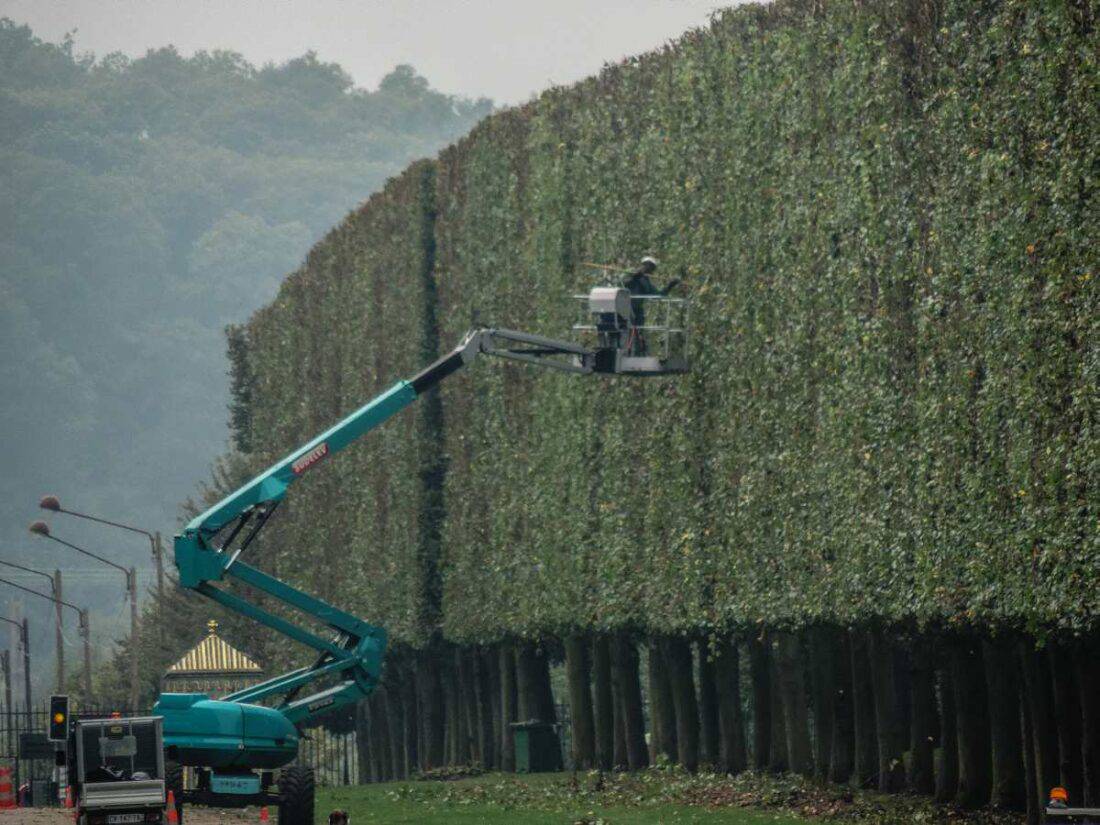
Then, on a trip to Hampton Court, I saw a screen made from a quadruple cordon of hornbeam trees. A cordon is literally “cable” or “line” in French. It is also a horticultural term for a horizontal line of a topiary. As for these trees at Hampton Court, the hornbeam trees were growing out of a hedgerow of Taxus. The hornbeams were trained into four cordons and then tied together to make a big screen around the parking lot. It was beautiful and precise. Right then and there, I fell in love with the concept.
Years later, on a visit to France, a group of us visited Versailles. It was there that I saw miles of trees pruned into hedges. In some spots, the trees were limbed up from the ground so you could see across the plane, but the tree canopies were pruned into long rectangles. Aha! This was the infamous aerial hedge.
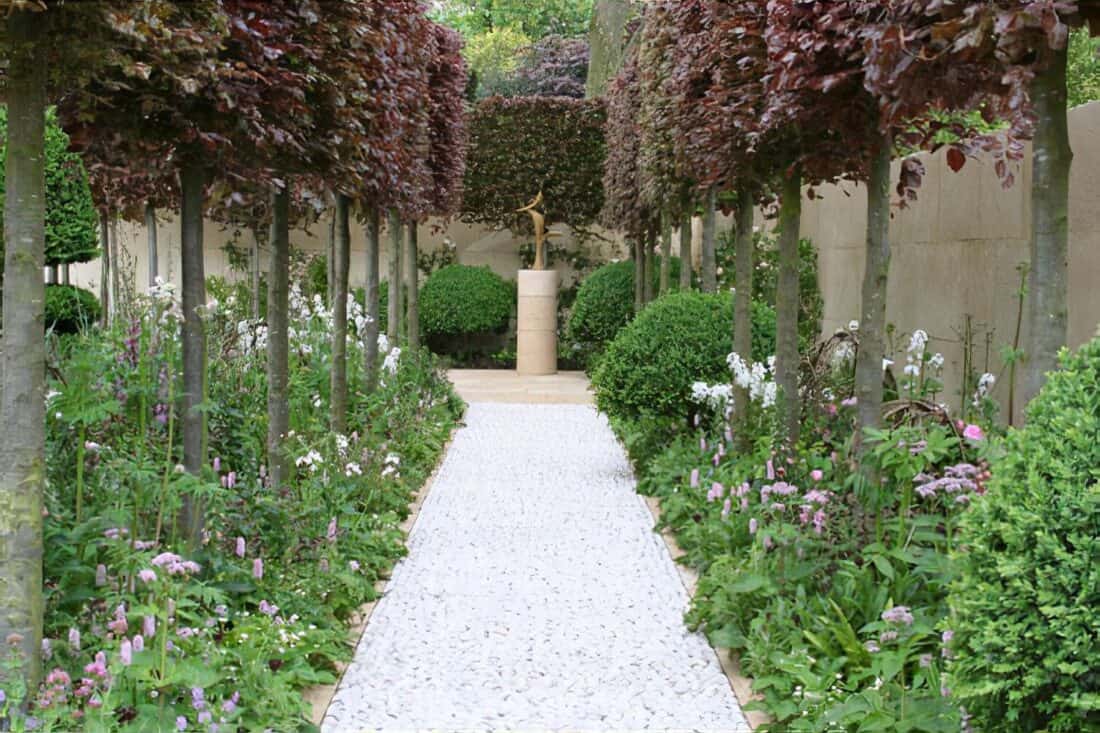
If you look at the competition gardens at the Chelsea Flower Show, one designer always chooses the aerial hedge.
And then there are the Tuilleries in Paris. The whole thing is basically a series of spaces created by aerial hedges. The landscape feels open on a human scale since the greenery sits at a roof level and gives an enclosed feeling.
Maybe it is a European thing (like the man-purse), but aerial hedges never seem to catch on here in the US. I, for one, really dig aerial hedges (and messenger bags but not man-purses) and wish that more gardens would include them.
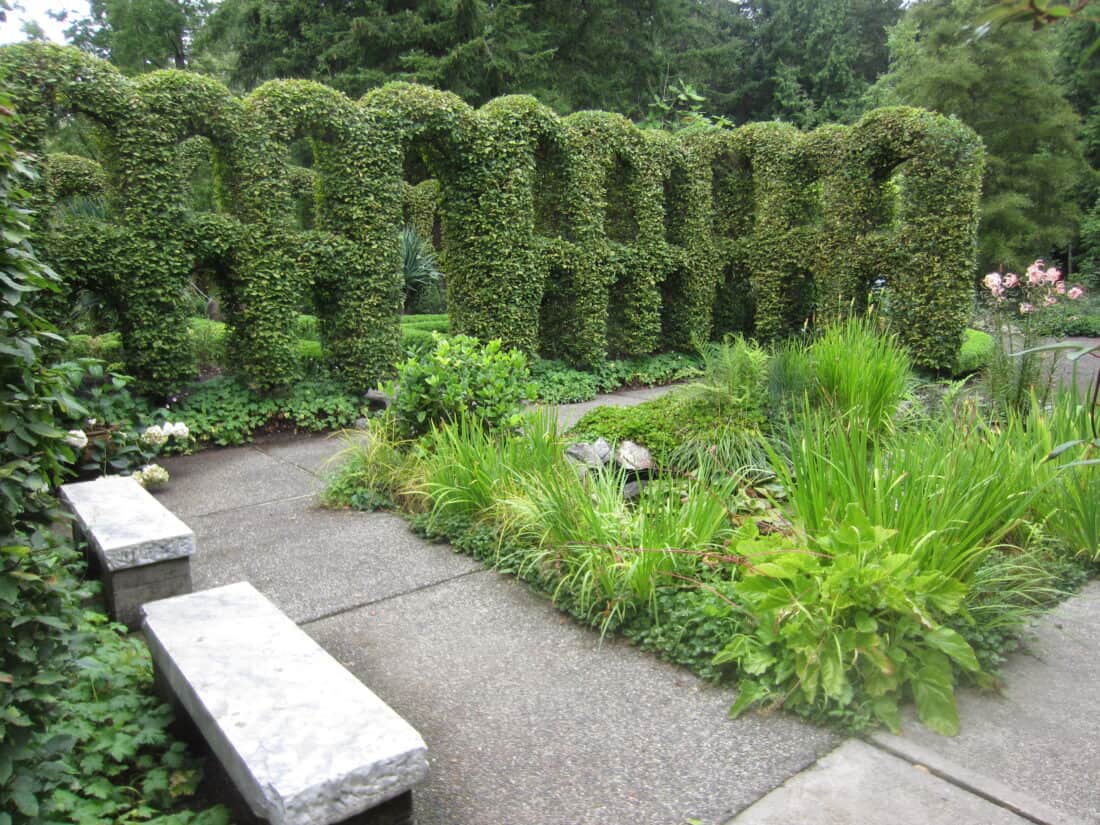
Yes, they take time, and someone has to work for years to prune and shape them, but the resulting form is fun and really defines a garden. I can count on one hand, the gardens that I have seen in the United States that feature aerial hedges:
- Longwood Gardens In Pennslyvania(Tilia or little leaf linden)
- Dumbarton Oaks in Washington, DC (Carpinus or hornbeam)
- Old Westbury in Connecticut (Tsuga or Hemlock)
- Lotusland in California (Pittosporum)
- Heronswood in Washington (an awesome, arching display of trained hornbeams)
There have to be other gardens that I have missed. Are there aerial hedges that you recall seeing here in the States? Why do you think that they have not caught on here as they have in Europe? If ever given the chance to design a Chelsea garden, I would design a satirical garden featuring an assortment of aerial hedges using plants that one would never expect to see grown this way.
–Rodney
New Hornbeam hedges before they fill out and fully grow together. Aerial hedges are great not only for formal gardens, but they are a space saving way to create shade and privacy in small gardens. Image from Garden Drum.
5 Trees commonly used for pleaching and Aerial Hedges:
Pleached tree hedges are an elegant addition to any garden, providing structure and privacy. When selecting trees for pleaching in North America, consider species that are hardy, adaptable, and respond well to pruning and training. Here are some of the top choices:
1. Carpinus betulus (European Hornbeam)
- Hardiness Zones: 4-8
- Attributes: European hornbeam is a favorite for pleaching due to its dense foliage, which provides excellent screening. It’s tolerant of heavy pruning and can thrive in various soil types.
- Benefits: Offers a formal, tidy appearance with smooth, gray bark and serrated leaves that turn yellow in the fall.
2. Tilia cordata (Littleleaf Linden)
- Hardiness Zones: 3-7
- Attributes: Littleleaf linden has heart-shaped leaves and a pyramidal shape. It’s very adaptable and responds well to pleaching.
- Benefits: Provides dense foliage, fragrant flowers in early summer, and a uniform appearance when pleached.

3. Quercus ilex (Holm Oak)
- Hardiness Zones: 7-10
- Attributes: Holm oak is an evergreen species with glossy, dark green leaves. It’s ideal for milder climates and provides year-round foliage. It is particularly useful for coastal gardens and is native to the mediteranean.
- Benefits: Offers a sturdy, dense hedge that remains green throughout the year.
4. Fagus sylvatica (European Beech)
- Hardiness Zones: 4-7
- Attributes: European beech is known for its smooth, gray bark and beautiful foliage that turns coppery in the fall and often stays on the tree through winter. There are also Copper beech that have purple foliage throughout the leaf season.
- Benefits: Creates a lush, dense hedge with a refined appearance.
5. Acer campestre (Field Maple)
- Hardiness Zones: 5-8
- Attributes: Field maple is a versatile tree with lobed leaves that turn golden in the fall. It’s hardy and responds well to pleaching.
- Benefits: Provides excellent seasonal interest with its vibrant fall color and dense foliage.
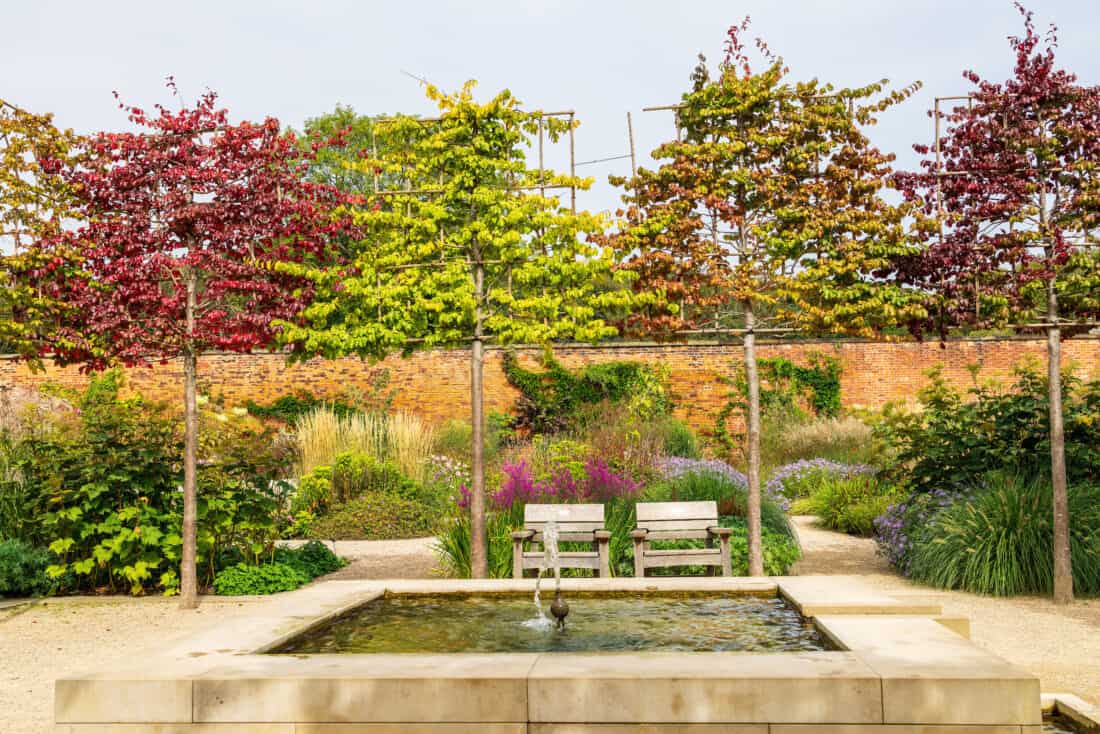
Resources for Pleached Trees and Aerial Hedges
- Instant Hedge
- Select Horticulture
- (let me know if you know of others)
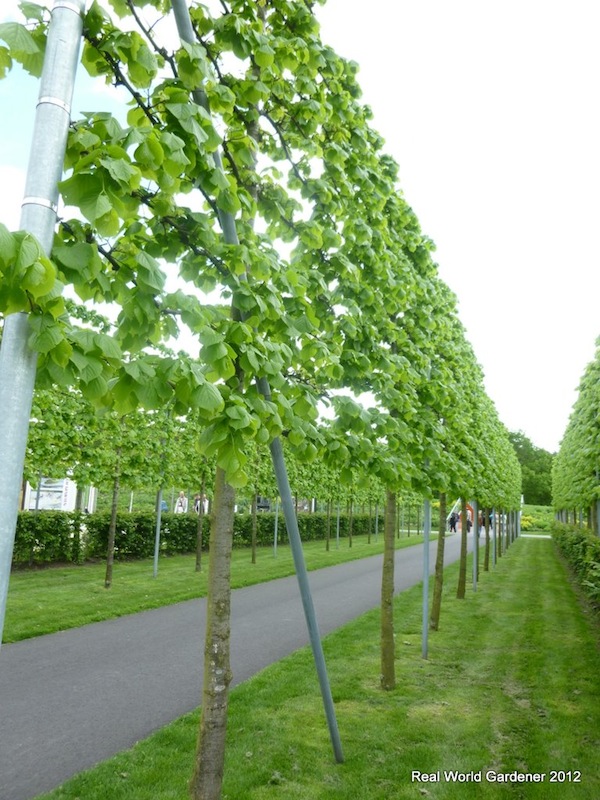
+comments+